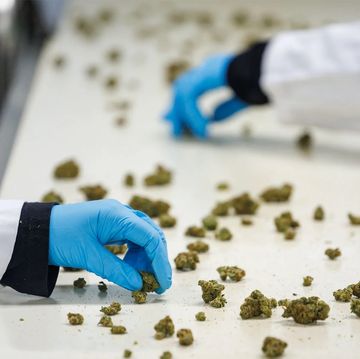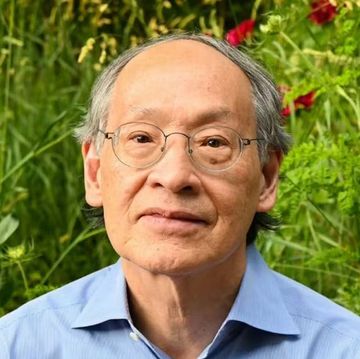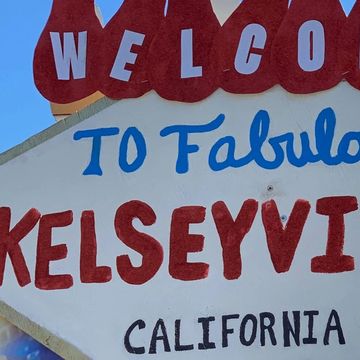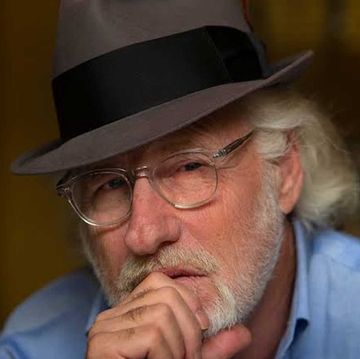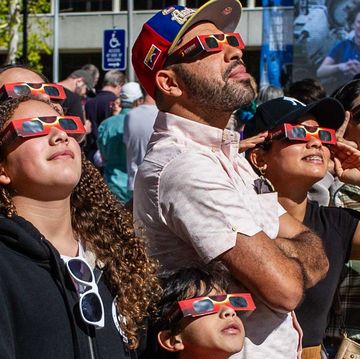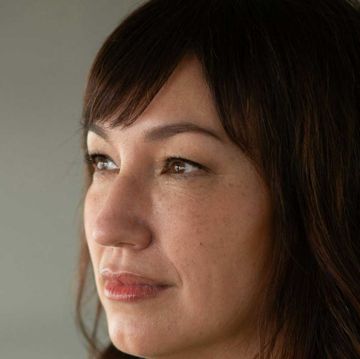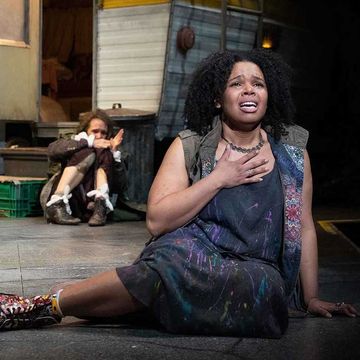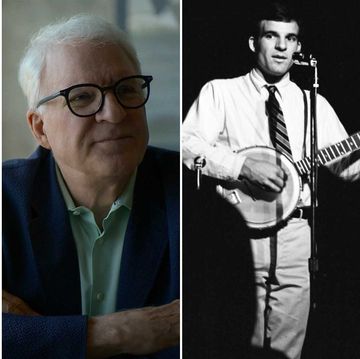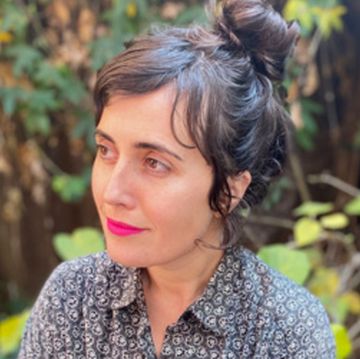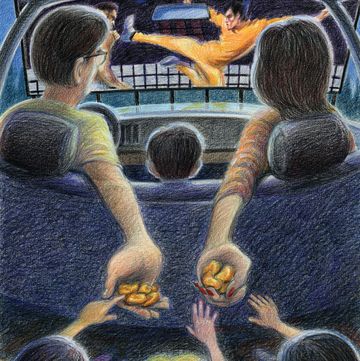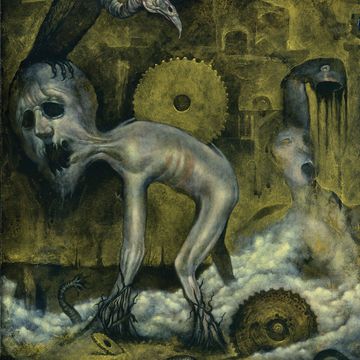It’s half past four in the afternoon, but the new café adjacent to Pasadena stalwart Vroman’s Bookstore is buzzing as if it were early morning, prime time. A line loops before the counter, where patrons select grab-and-go fare, while most of the tables sit occupied by customers nursing carefully crafted drinks: horchata lattes; hibiscus ponche; or fragrant, cinnamon-tinged cups of café de olla. The last one is a specialty of the house at Tepito Coffee, a refreshingly distinctive outpost that debuted late last year.
This article appears in Issue 25 of Alta Journal.
SUBSCRIBE
Tepito’s menu, as well as the fine art on the walls and the meticulously constructed ofrendas resting in shelf nooks, elicits not just atmosphere but also a story—it sets an intention.
“When we started this,” says Tepito cofounder Richard Cabral, “we really did not have a formal plan.” That may be true, but what is clear is that they led from the heart.
In certain terms, Tepito has been a pushback, a response to a power shift in both the founders’ old stomping grounds of East Los Angeles, Echo Park, East Hollywood, and too many others of late to recite. Tepito was a reaction to an undertow. Erasure of the familiar. In these neighborhoods, coffee wasn’t just coffee but a flag in the sand, a coded way to signal, the two had observed, who was welcome and who was not. “The key thing in this origin story is gentrification,” says Cabral. “And the specialty-
coffee scene with gentrification? Well, it ripples through humanity.”
Cabral’s face, distinctive, lean, and animated, might feel familiar—if not from community gatherings, formal and informal, around L.A., then from his work as an actor, producer, and writer (Mayans M.C. and American Crime)—with a caffeinated energy that radiates in waves. His words fly in a rat-a-tat cadence as he finds us a corner space to chat on the café’s patio, which overlooks the flow of Colorado Boulevard, a famous strip of the old Route 66 that connected the country east to west. He straddles a chair, turned backward, that he’s placed across from Jose Arellano, who’s Tepito’s coproprietor and also a vice president at Homeboy Industries, the venerable East L.A. nonprofit founded by Father Greg Boyle, which created a model for rehabilitation, reentry, and job-training programs for formerly gang-affiliated or incarcerated youth. Arellano’s bearing is easy, affable, and centered even as his phone flashes and vibrates nonstop during our hour-plus conversation about—and over, of course—coffee.
In its six months in Pasadena, Tepito Coffee has become a destination. Tepito the word, it’s crucial to note, has a nesting set of meanings. It comes from the Nahuatl teocali-tepiton and translates to “little temple,” Arellano tells me. The café has been drawing folks from beyond the city, county, and even state borders. “People have come from all four directions,” Arellano says. “There’s something about sitting at a table when that table has space for everyone. Now that’s a different table.”
In an incisive 2014 book, How to Kill a City: Gentrification, Inequality, and the Fight for the Neighborhood, P.E. Moskowitz contemplates the signs and spoils of gentrification: “The coffee shop is the tip of the iceberg.” For urban communities, especially those with Black and Brown populations, it’s a comprehensive, destabilizing development, shorthanded as “progress,” that has less to do with coffee and much more to do with capitalism. Coffee is an easy target; what lies at the root of its symbolism is harder to tap.
Both Cabral and Arellano felt this in their bones. In 2017, a friend’s coffeehouse in Boyle Heights was in jeopardy because of rising rents. His situation triggered memories of other friends and family who had been fighting their own causes—barely holding on to property that they’d tended for generations, protecting a sense of community in a neighborhood that had been close-knit but wouldn’t be much longer.
Coffee always seemed to be a harbinger as well as its own currency.
“Gentrification was occurring,” says Arellano, not just in Boyle Heights but in many communities across Los Angeles. “We started to just go into these local businesses and buy coffee. That’s going to support them, right? We would go and have our [Homeboy] meetings there. That’s going to keep them going in the community serving people, right?”
Or that was the plan.
Cabral pitched in full force as well: “I would buy coffee from them for the show and take it to the set of Mayans. Bring it to Hollywood.”
For all the boosting, “it still wasn’t enough,” says Arellano. “Much as we got behind him, the rent went up. He couldn’t afford his lease, and the coffee shop went under.” Another one down.
But the loss added up to something. It connected to a ripple effect they’d both observed over time. Those shuttered businesses, lost jobs, and dispersed families all had repercussions, and the impacts resembled a pattern that Arellano was seeing at Homeboy—people who had come through the jail and prison system owing to a lack of opportunities and options.
Cabral and Arellano both know this pattern from experience. Ten years ago, in another life, they met through Homeboy. They’d gone through the program after serving time in the L.A. County jail system. “Richard and I have been in the food and beverage industry through Homeboy,” says Arellano. They know what it is like to strategize, to survive with slim resources and still rebuild your life. Perhaps, even, thrive.
Inside jail, coffee had power. Back then, Arellano would watch bundles of instant coffee drop down a floor from an upper tier like a deposit in the bank. “It became part of the communication. Sometimes you might not have any money, and it’s like, ‘Hey, homie, can I get a shot of coffee?’ Coffee becomes a hot commodity,” says Cabral. “Like it’s a shot. Like how precious coffee becomes to us. It’s like gold.”
It’s symbolic. The having and not having. “With gentrification and incarceration,” says Arellano, “there’s parallels that cross because even the coffee is owned by the system. The system is selling you these items.… Whoever is a part of that structure is benefiting from it.… You couldn’t get [coffee] unless you could afford it.… There was no other option. It is like gold in there.”
Just like out here, they’d noted.
If you want to be part of the conversation, you need to become part of the weave, the ritual, part of the structure. They needed to shape their destiny. There was, says Cabral, “a different way to look at coffee.”
Shortly after his friend’s shop shuttered, Cabral didn’t want to waste time. With momentum at his back, he reached out to Michael de la Rocha at Revolve Impact, a creative agency, who helped develop Tepito’s branding. “He gave us a face because he really understood the mission,” Cabral says. De la Rocha, energized by the plan, stepped up to the role of cofounder, and Cabral pulled in his networks. The start, he admits, was rocky—
including losing a linchpin figure: “My coffee guy just…leaves! Disappears!”
But one thing Cabral knows well is resilience. “No one taught me business. Didn’t teach us about agriculture. All of this,” he says, gesturing with his chin toward the bustle and hum inside, “is based on conversation. Relationships.”
He’s been learning as they go: redirecting, traveling, connecting with roasters and farmers with deep roots in Mexico, and assembling a team of various skill levels—apprentice, journeyman, master. “A gangster doing espresso was my fuckin’ vision! That shit hits.”
They started with a coffee cart, then on to pop-ups and catering gigs. De la Rocha’s sharp branding telegraphed a message of pride: “Rooted in Mexico. Crafted in East L.A.” A buzz followed them. And yet, as with so many other business ventures, the pandemic forced a pause. Even still, “we…needed to get coffee in folks’ hands,” says Cabral. “The coffee had to hit the streets!”
As serendipity would have it, Cabral spotted the Available sign in the former satellite Jones Coffee Roasters space next to Vroman’s (the bookstore is a partner of Alta Journal ’s California Book Club). The café had quietly shuttered in 2022. Now a Pasadena-Altadena resident, he’d been shopping in the bookstore for years with his kids. Just minutes from his home, the opportunity seemed more prophetic than chance.
“What hooked me in our early meetings to discuss the lease,” says Julia Cowlishaw, Vroman’s chief executive officer, “was Richard and Mike’s imagination. Their entrepreneurial spirit. What they wanted to bring to Pasadena.” It was also the way they told their story, the passion: “I thought that was a beautiful connection with what we do. That story of hope and resilience. We all need that to be part of our own story, and they manifest it in everything they do.”
Tepito has become part of the fourth-wave craft-coffee scene, similar in mission to enterprises like the East Bay–headquartered Red Bay Coffee, which, since 2014, has been spotlighting premium, sustainable beans and hiring a diverse and inclusive crew that represents and employs the community it serves.
“Well, yeah, we couldn’t stop gentrification in our community. So we’ll go over there,” Arellano says, emitting a gust of a laugh. “We’ll go to yours…”
“But really,” he adds, “we come in love. It’s not about winning or losing or owning or not owning. It’s about us becoming one. And seeing ourselves in each other. We want everyone to feel a part of it.”
What this is really about, though, is coexistence, connecting across distance.
In late spring, Tepito and Homeboy formalized what was already a tacit connection that will provide resources and foundational support while also offering yet another training destination—the café itself—for the Homeboy Industries cohort.
“Since he left Homeboy,” says Arellano, “Richard has become hope in the flesh. He has always been somebody who has come back. He’s always been a pillar not just in the Homeboy community but in the community where homeboys can see that this is not such a far-fetched idea, right? That ‘We can make it, homie.’ ”
They have felt the love served back across the counter. Last December, amid soaring mariachi brass and ceremonial dancers, hundreds of people spilled into the street at the official grand opening. After the ribbon cutting, Cabral stood before the crowd and offered testimony: “I’ve been working in this industry for 10 years, working for other people, and I wanted to know, If I did something for me, would people come? People came for me today.”
They did. Because there was a place for them: in the story, at the table.
All of this for coffee? It’s that—and more. This embrace also gets at what Tepito signifies. That other meaning Arellano earlier hinted at—the one that is as precious to them as the sacred “little temple”—is the café’s hardscrabble reputation. Tepito is one of the most ancient districts in Mexico City, full of open-air markets—tianguis—where you can buy most anything. Arellano and Cabral were pulled in by the energy, the ambition. “Tepito is like the barrio,” says Arellano. “We come from the barrio…where everyone is trying to hustle and grind and make it out of poverty. That’s our story. We’ve been the underdog since birth, so it’s to be connected to that energy.”
Cabral leans in, underscores: “Society has labeled this place the worst of the worst. But look what’s come out of it. Some of the best boxers in Mexico. One of the most sacred altars of Mexico is in El Tepito, right? But to get to even touch the sacredness, you got to go through the shit sometimes.” •
Lynell George is an award-winning Los Angeles–based journalist and essayist. She has been a staff writer for both L.A. Weekly and the Los Angeles Times. Her work has appeared in various news outlets including the New York Times; Smithsonian; Vibe; Boom: A Journal of California Preservation; Sierra; Essence; and Ms. She was selected to be a University of Southern California Annenberg/Getty Arts Journalism fellow in 2013 and received the Huntington Library’s Alan Jutzi Fellowship for her studies of California writer Octavia E. Butler in 2017. She is the recipient of a 2017 Grammy Award for her liner notes for Otis Redding Live at the Whisky A Go Go. George is the author of three books of nonfiction: No Crystal Stair: African Americans in the City of Angels (Verso/Doubleday); After/Image: Los Angeles Outside the Frame (Angel City Press); and her most recent book, A Handful of Earth, A Handful of Sky: The World of Octavia E. Butler (Angel City Press), published in 2020, which was a Hugo Award finalist in the Best Related Work category in 2021.



